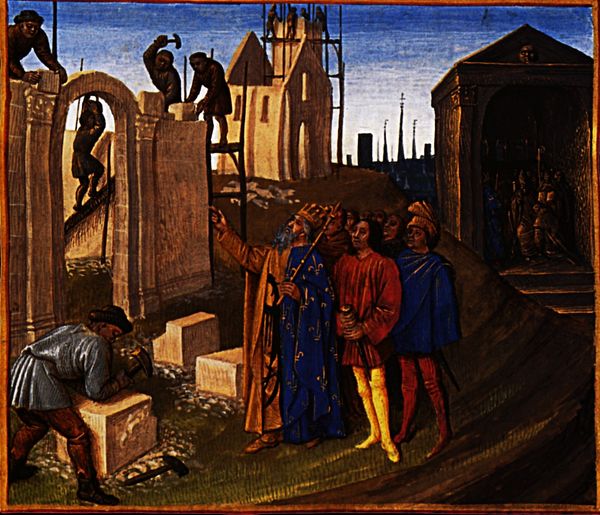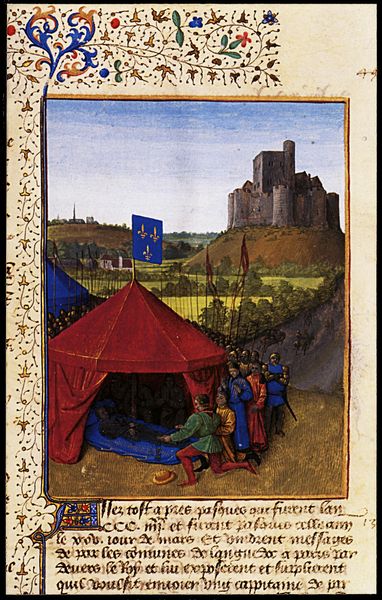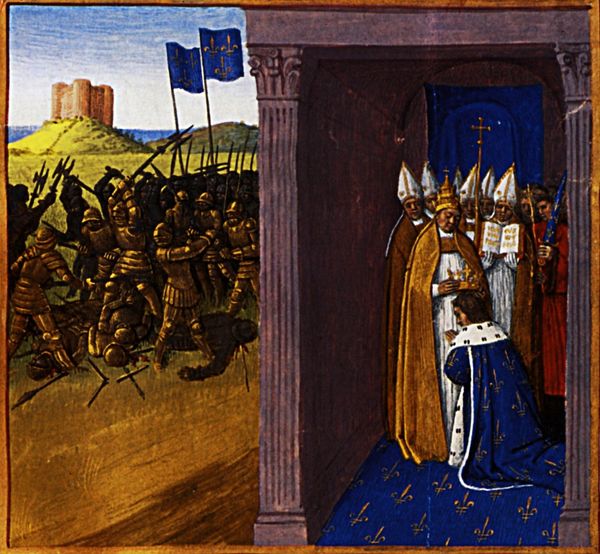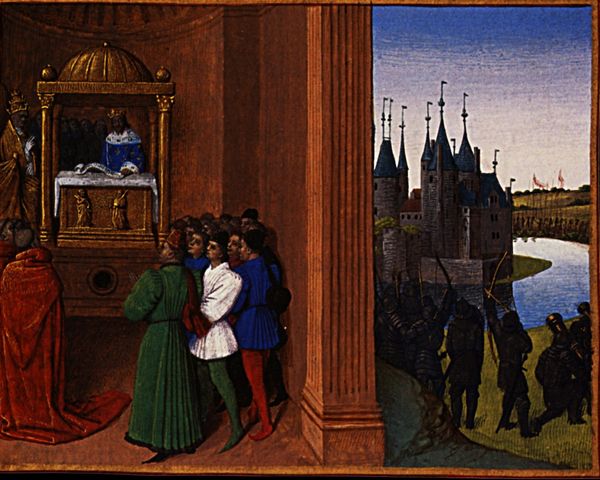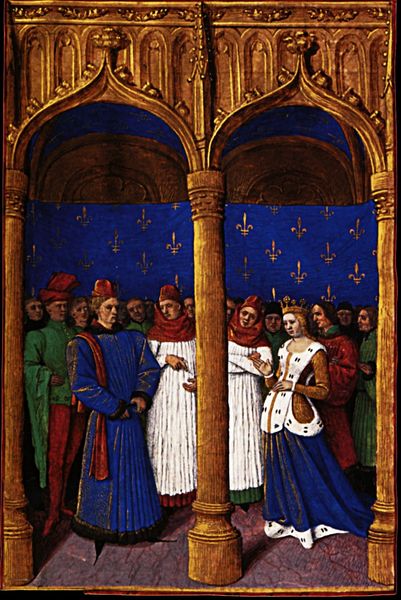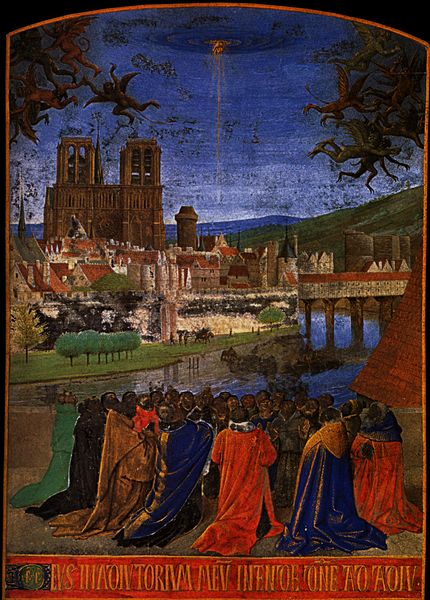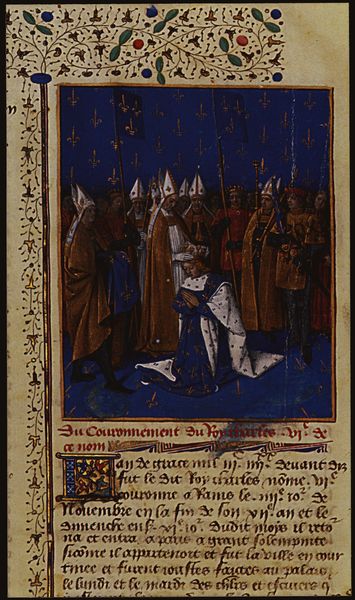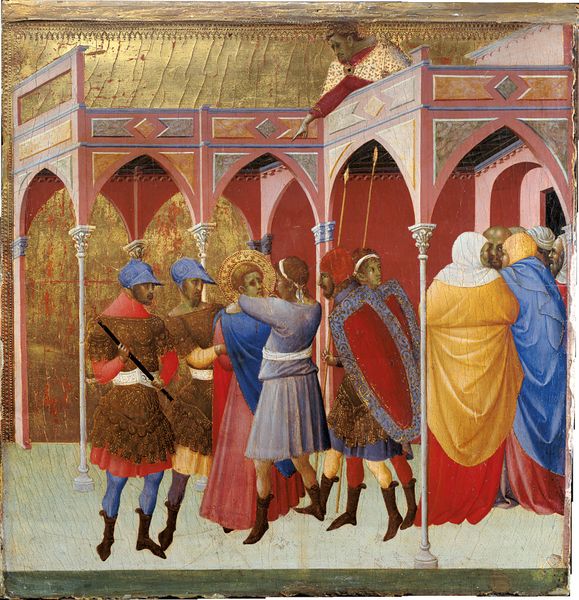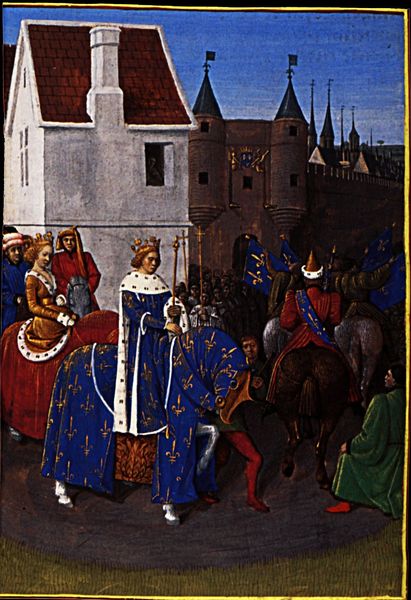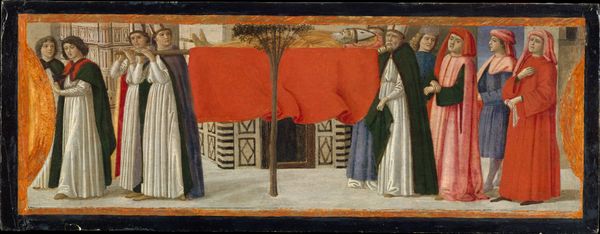
St. Jacques appears to Charlemagne 1460
0:00
0:00
jeanfouquet
Bibliothèque nationale de France (BnF), Paris, France
tempera, painting
#
medieval
#
narrative-art
#
tempera
#
painting
#
figuration
#
oil painting
#
history-painting
#
international-gothic
#
portrait art
Copyright: Public domain
Jean Fouquet made this miniature, St. Jacques Appears to Charlemagne, sometime in the 15th century, likely using tempera or watercolor on parchment. Consider the intense, saturated colors and the fine detail, achieved through careful layering of pigment. The costly ultramarine blue of the tent, derived from lapis lazuli, would have been especially prized, signalling the patron's wealth. This reflects the status of illuminated manuscripts at the time, requiring skilled labor and expensive materials. The processes of grinding pigments and applying them with meticulous brushwork meant a significant investment of time; Fouquet would have likely had assistants to help with the work. This emphasis on skilled handwork stands in contrast to later, mechanized modes of production. The image is less about spontaneous expression, and more about skilled execution and the ability to render a convincing scene with available materials. Paying attention to these aspects of making allows us to understand the value that this image held for its original audience.
Comments
No comments
Be the first to comment and join the conversation on the ultimate creative platform.
